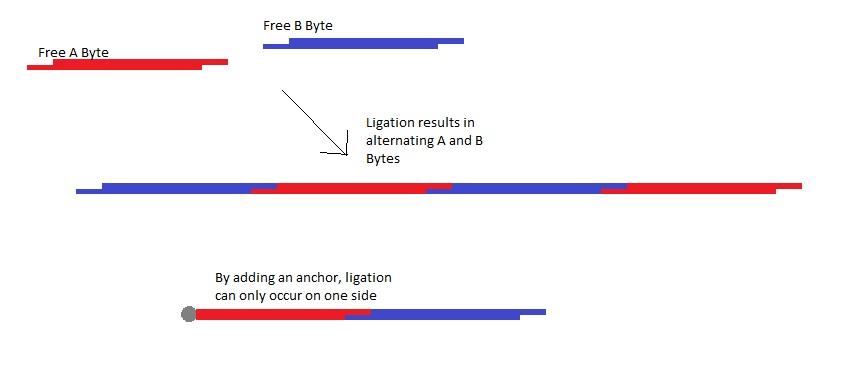Team:Alberta/project
From 2010.igem.org
| Line 249: | Line 249: | ||
<ul> | <ul> | ||
<li><a href="#h1">Project Theory</a></li> | <li><a href="#h1">Project Theory</a></li> | ||
| - | <li><a href="#b1"> | + | <li><a href="#b1">Types of Parts</a></li> |
<li><a href="#t1">Testing Parts</a></li> | <li><a href="#t1">Testing Parts</a></li> | ||
<li><a href="#a1">Assembly Method</a></li> | <li><a href="#a1">Assembly Method</a></li> | ||
| Line 272: | Line 272: | ||
<img src="https://static.igem.org/mediawiki/2010/d/dc/Alberta2010kaTheoryimage.jpg"/> | <img src="https://static.igem.org/mediawiki/2010/d/dc/Alberta2010kaTheoryimage.jpg"/> | ||
| - | <div id="blacktop"><a name="b1" id "b1"></a> | + | <div id="blacktop"><a name="b1" id "b1"></a>Types of Parts</div> |
| - | <p> | + | <p>One type of part in our kit is an ORF part. In our kit, all ORF parts have been modified in such a way that on their own they are missing a start codon and a stop codon and their first and last amino acids have been modified. This means that for an ORF part actually be a functional Open Reading Frame in plasmid construct, a start codon and stop codon must be provided in the flanking region of the adjacent parts. This allows tremendous flexibility in our final constructs. Two open reading frames can be joined with a polypeptide chain, this allows for fluorescent tagging of proteins or construction of scaffolds for biochemical pathways. Polypeptide tags can be added to either the N or C terminus of the ORF leading to efficient purification of proteins. The usefulness of this system altered ORF pieces is profound.</p> |
<div id="blacktop"><a name="t1" id "t1"></a>Testing Parts</div> | <div id="blacktop"><a name="t1" id "t1"></a>Testing Parts</div> | ||
Revision as of 16:20, 19 August 2010

Genomikon: an Educational Toolkit for the Rapid Assembly of Plasmids
Synthetic biology is a new and expanding field that has potential applications in every aspect of society. Today, synthetic biology is underused because it is expensive and slow. The University of Alberta is developing a method of plasmid assembly that is modular, rapid, and inexpensive. We are in process of designing an educational kit, Genomikon, which will enable anyone to construct a plasmid without special equipment. We will also provide a comprehensive lab manual to accomodate those new to the field.
To demonstrate the accessibility of our Genomikon toolkit, we will implement it in a high school laboratory setting. Genetic parts will be adapted into a system called BioBytes. This system will allow students to rationally create functional plasmids. The kit’s flexiblity will accomodate both predesigned experiments and new creative expressions. We believe that our kit could revolutionize science education. Our project not only seeks to optimize current procedures of synthetic biology but will also expose a new generation of students to this exciting field.
The DNA components of the Genomikon kit will be provided in linear pieces named BioBytes. These Bytes have 4 base 5' overhangs on both ends which gives specificity to the bytes that can neighbor it. BioBytes come in two flavors: A bytes and B bytes, which are defined by the composition of the overhangs it has. The result is that A bytes can only be ligated to B bytes and vise versa leading to a construct alternating in A and B bytes. The specificity in absolute order of a construct is given by an anchor which restricts ligation to only one side.

One type of part in our kit is an ORF part. In our kit, all ORF parts have been modified in such a way that on their own they are missing a start codon and a stop codon and their first and last amino acids have been modified. This means that for an ORF part actually be a functional Open Reading Frame in plasmid construct, a start codon and stop codon must be provided in the flanking region of the adjacent parts. This allows tremendous flexibility in our final constructs. Two open reading frames can be joined with a polypeptide chain, this allows for fluorescent tagging of proteins or construction of scaffolds for biochemical pathways. Polypeptide tags can be added to either the N or C terminus of the ORF leading to efficient purification of proteins. The usefulness of this system altered ORF pieces is profound.
Insert project details here.
Insert project details here.
Insert project details here.
Insert project details here.
Insert project details here.
 "
"